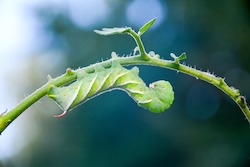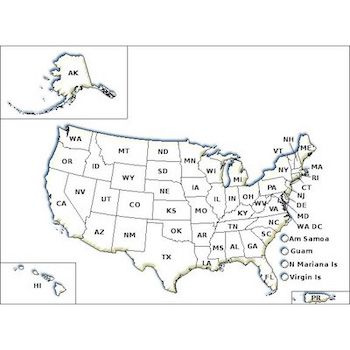Caterpillars are young moths and butterflies in their larval stage. They can cause damage to plants or other materials when they eat. Some even have hairs or hooks that can sting when touched. For some people, chewing damage can cause big problems in their home, yard, garden, or crop. But not all caterpillars cause damage. Some, like monarch butterfly caterpillars, are beneficial because the adult butterflies are pollinators in our environment.
There are many different types of caterpillars. Examples include:
- indoor caterpillars like those that turn into pantry moths and clothes moths,
- leaf-eating ("leaf-feeding") caterpillars that might be common in trees or in the garden, and
- fruit-eating caterpillars like those that turn into coddling moths.
Depending on the caterpillar, they may only eat specific foods. And although it’s usually the caterpillar that causes damage, they might be named for the adult moth or butterfly they turn into. For these reasons, learning about the caterpillar you’re dealing with is important for control.
Consider these tips when controlling caterpillars:
- Caterpillars that can cause damage may look like harmless or beneficial ones. Different caterpillars may need different control methods. Contact your local County Extension office for help with identification.
- Your area may have nuisance or especially destructive pests that are important in your state. Examples might include Asian gypsy moths and some types of tent caterpillars. Different states have different offices for reporting these pests. They may offer control strategies as well. Check with your County Extension office if you're not sure where to start.
- For woody trees and shrubs with "webworms" or tent caterpillars, normal winter pruning may remove eggs before they hatch. A high-pressure hose may help remove webs during other times of the year.
- Inspect affected plants often and consider physically removing caterpillars if you can. Check stems, flowers, and underneath leaves. Look for signs of chewing damage or frass (caterpillar poop).
- Consider using a variety of control options. Hand pick or shake caterpillars off your plants. Squish them, drop them into soapy water, or release them in an area where you do not mind having caterpillars.
- If possible, cover your plants with a crop cage or insect screen. This can stop moths or butterflies from laying their eggs on your plants.
- Before caterpillars turn into moths or butterflies, they turn into pupae inside of a cocoon or chrysalis. Some pupae stay in the soil during the winter. Tilling soil after harvest can reduce the chances of pupae survival.
- Consider using a "trap crop" as bait. Include plants caterpillars like to eat. Plant the lure on the outside of your garden to pull caterpillars away from your desired plants. This method is referred to as trap cropping.
- Consider attracting other insects and spiders that feed on caterpillars. A garden with many native plants and flowers provides habitat for beneficial insects.
- Depending on what caterpillar you have, you may consider using pheromone traps. Pheromone traps catch the adults before they lay eggs that will later hatch into caterpillars.
- If you choose to use a pesticide, always follow the label. Try a lower toxicity product first.
If you have questions about this, or any pesticide-related topic, please call NPIC at 800-858-7378 (8:00am - 12:00pm PST), or email us at npic@oregonstate.edu.



